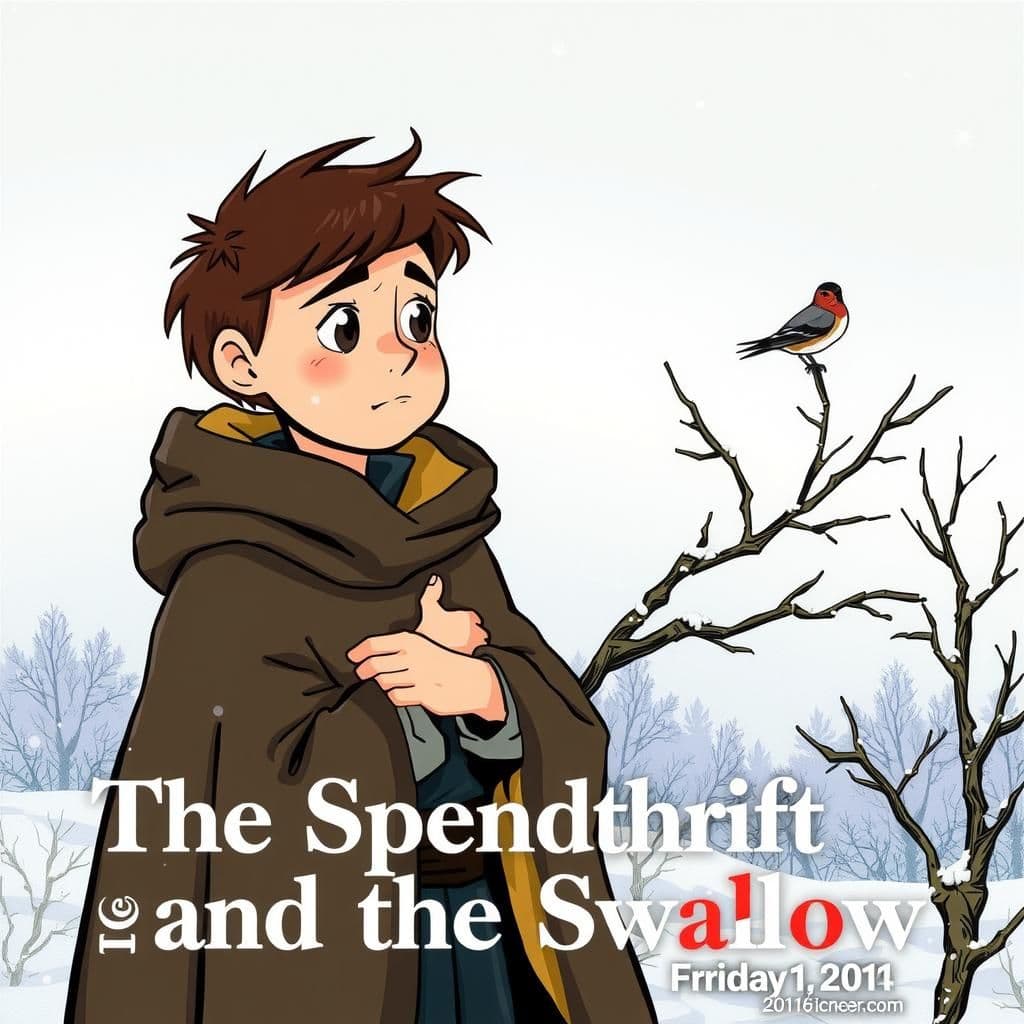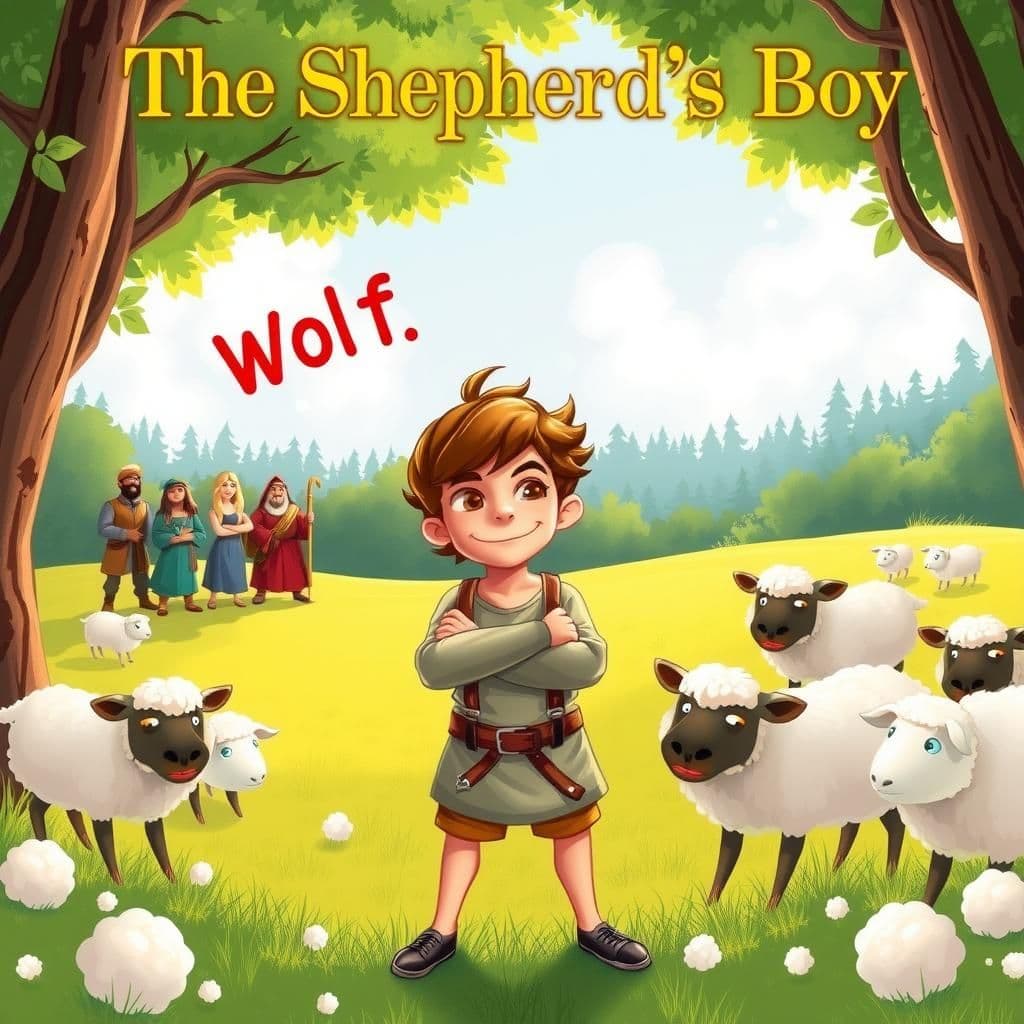The Spendthrift and the Swallow

Story Summary
In this cautionary tale, a young spendthrift squanders his inheritance and, mistaking an early Swallow's arrival for the arrival of summer, sells his last cloak. When winter returns and the Swallow lies dead, he realizes that both their fates were sealed by the premature hope inspired by the bird's early appearance. This story serves as an important moral lesson, illustrating the dangers of acting impulsively and the consequences of misplaced optimism.
Click to reveal the moral of the story
The moral of the story is that hasty decisions based on incomplete information can lead to dire consequences.
Historical Context
This story echoes themes found in Aesop's Fables, particularly the moral lessons about folly and the consequences of impulsive actions. It highlights the folly of premature optimism and the dangers of misinterpreting signs, reflecting a cultural caution against hasty decisions based on fleeting appearances. Variants of this tale can be traced back to ancient Greece and have been retold in various forms throughout history, emphasizing the timeless nature of its moral lessons.
Our Editors Opinion
This story reminds us of the dangers of impulsive decisions based on premature optimism, especially in today's fast-paced society where immediate gratification often overshadows long-term planning. For instance, a young professional might spend their savings on a luxury item after receiving a bonus, only to face financial strain later when unexpected expenses arise, echoing the young man's regret for acting on the Swallow's misleading signal.
You May Also Like

The Ass and His Driver
In "The Ass and His Driver," a stubborn donkey bolts toward a precipice, prompting its owner to intervene. Despite his efforts, the donkey's obstinacy leads the owner to let go, warning that the donkey will face the consequences of its choices. This concise moral story highlights how willful individuals often pursue their own paths, regardless of the risks, making it a thought-provoking quick read with a clear moral lesson.

The Milk Woman and Her Pail
A farmer's daughter daydreams about the wealth she will gain from selling her milk and the lavish life that awaits her, filled with new clothes and suitors at Christmas parties. However, her fantasies come crashing down when she accidentally drops her milk pail, illustrating a valuable lesson in the storytelling with morals tradition: that one should not count their chickens before they hatch. This very short moral story serves as a reminder to stay grounded and not get lost in dreams of fortune.

The Shepherd's Boy
In this fable story with moral, a lonely young Shepherd Boy tricks the villagers twice by falsely shouting "Wolf" to gain their attention. When a real Wolf appears and threatens his sheep, the villagers ignore his cries, believing he is lying again, leading to a loss of his flock. This unique moral story teaches young readers that a liar will not be believed, even when telling the truth, emphasizing the importance of honesty in real-life stories with moral lessons.
Other names for this story
The Cloak and the Swallow, The Spendthrift's Folly, A Lesson from the Swallow, The Early Bird's Mistake, Cloak of Misfortune, When Seasons Mislead, The Swallow's Warning, The Cost of Impulsiveness
Did You Know?
This story illustrates the dangers of impulsive decisions based on premature optimism, as both the young man's misfortune and the swallow's demise stem from a misunderstanding of the seasons and the consequences of acting too hastily.
Subscribe to Daily Stories
Get a new moral story in your inbox every day.